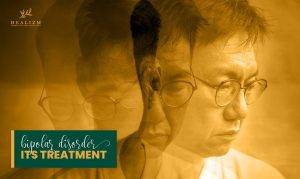
What Is Bipolar Disorder and What Is the Treatment for Bipolar Disorder?
Bipolar Disorder is a severe Mental health condition characterized with the aid of extreme temper swings, such as highs (mania) and lows (depression).
Even although bipolar Disorder is a lifelong situation, you could manipulate your mood swings and other symptoms by using following a remedy plan.
Medication and psychological counseling (psychotherapy) are typically used to deal with it.
Understanding the condition and its treatment is essential to developing a superb and supportive surroundings, whether or not you are residing with bipolar disease or a involved family member looking for information.
Table of Content
- Understanding Bipolar Disorder
- Types of Bipolar Disorders & Their Symptoms
- Age of Onset and Varying Symptoms
- Treatment
- Identifying Bipolar Disorder in Children and Teens
- Finding a therapist for bipolar disorder near me
- When to Get Emergency Help
- Get Help Today
Understanding Bipolar Disorder
Bipolar disease, or manic-depressive illness, is a psychiatric circumstance that reasons severe shifts in mood, energy, and pastime levels.
People with bipolar disorder experience two main mood episodes:
- Depressive episodes – characterized by sadness, hopelessness, lethargy, and loss of interest.
- Manic or hypomanic episodes – characterized by euphoria, heightened mood, increased energy, and impulsive behavior.
The effects of these episodes can persist for days, weeks, or even months, significantly impacting personal relationships, work, and daily routines.
Types of Bipolar Disorders & Their Symptoms
1. Bipolar I Disorder
Bipolar I disease is characterized via experiencing as a minimum one manic episode, which may be preceded or accompanied via hypomanic or primary depressive episodes.
A manic episode is marked with the aid of an intensely multiplied temper, extended electricity, and erratic conduct.
It can lead to a significant impairment in functioning and even trigger psychosis – detachment from reality.
Symptoms of Bipolar I Disorder
Manic Episode Symptoms:
- Intense euphoria and feeling overjoyed.
- Irritability.
- Full of energy and restlessness.
- Decreased need for sleep.
- Grandiose beliefs or excessive self-esteem.
- Fast and pressured speech.
- Delusional and illogical thinking.
- Risky and impulsive behavior, such as excessive spending or substance abuse.
Depressive Episode Symptoms:
- Continually feeling sadness or emptiness.
- Loss of interest or pleasure in activities.
- Changes in appetite or weight.
- Insomnia or excessive sleeping.
- Fatigue or loss of energy.
- Feelings of worthlessness or extreme guilt.
- Difficulty concentrating or making decisions.
- Recurrent thoughts of death or suicide.
2. Bipolar II Disorder
Bipolar II sickness entails experiencing at least one fundamental depressive episode and at least one hypomanic episode.
Unlike a full manic episode, hypomanic episodes are much less severe however nonetheless characterised via an elevated temper and extended energy.
People with bipolar II disease by no means enjoy a full manic episode.
Symptoms of Bipolar II Disorder
Hypomanic Episode Symptoms:
- Happy and euphoric mood.
- Uncontrollable excitement.
- Hypersexuality.
- A rise in energy and activity.
- Increased productivity.
- Decreased need to sleep.
- Rapid and loud speech.
- Confident and adventurous.
- Creativity potential.
Depressive Episode Symptoms:
Similar to symptoms described in Bipolar I Disorder.
Bipolar II Disorder – A Distinct Diagnosis
Bipolar II disorder is not a milder version of bipolar I; it is a separate diagnosis.
While bipolar I disorder’s manic episodes can be severe and risky, bipolar II disorder is defined by more prolonged periods of depression, leading to substantial impairment.
3. Cyclothymic Disorder
Cyclothymic sickness, additionally known as cyclothymia, is a milder form of bipolar disorder.
It entails experiencing severa intervals of hypomanic and depressive signs, less extreme than those visible in principal melancholy.
Cyclothymia can cause emotional ups and downs but are not as severe as those associated with bipolar disorder I or II.
Symptoms of Cyclothymic Disorder
Hypomanic Symptoms:
- An exaggerated feeling of happiness or mild euphoria.
- Increased energy and enthusiasm.
- Irritability or quick temper.
- Talking more than usual.
- Racing thoughts.
- Inability to concentrate.
- An increased drive to achieve goals or perform well.
Depressive Symptoms:
Similar to symptoms described in Bipolar I and II disorders, but milder.
- Feeling sad, hopeless, or empty.
- Tearfulness.
- Irritability (especially in children and teenagers)
- Once enjoyable activities are no longer enjoyable.
- Weight changes.
- Guilt or feelings of worthlessness.
- Sleep problems.
- Restlessness.
- Fatigue or slowed-down feeling.
- Problems concentrating.
- Suicidal thoughts (more likely to occur in people with bipolar disorder I or II).
Age of Onset and Varying Symptoms
Bipolar disorder can manifest at any age, but it is commonly diagnosed during teenage years or early 20s.
Symptoms can vary from character to character and may differ over time.
Treatment
Treatment for bipolar disorder is best managed by a psychiatrist specializing in mental health conditions. A psychologist, social Worker, and psychiatric nurse may be on your remedy crew.
The treatment involves:
- Medications: Balancing moods through medication is often the first step. TX stabilizers and anticonvulsant medications are often prescribed to manage the highs and lows of bipolar disorder. Antidepressants and antipsychotics can also be used cautiously. Psychopharmacology drugs the brain and behavior, providing relief to people struggling with the condition.
- Continued Treatment: Lifelong medication is necessary, even during periods of improvement, to prevent relapses and manage symptoms effectively.
- Psychotherapy: Different types of therapy, such as cognitive-behavioral therapy (CBT) and family-focused therapy, can help people cope with the challenges of bipolar disorder. Psychotherapy aims to identify triggers, develop coping strategies, and improve communication with loved ones.
- Lifestyle Changes: Adopting a healthy lifestyle can significantly impact mood stability. Regular exercise, a balanced diet, adequate sleep, and stress management techniques can all contribute to managing bipolar symptoms.
- Support: Engaging teachers, school counselors, family, and friends can help identify services and encourage success.
- Family-focused therapy for bipolar disorder: Family-focused therapy teaches family members to recognize early warning signs of relapse and develop a plan to support the person during difficult times.
- Substance Abuse Treatment: If there are alcohol or drug issues, addressing them is crucial for managing bipolar disorder.
- Hospitalization: In severe cases, hospitalization can stabilize mood and ensure safety during manic or depressive episodes.
Identifying Bipolar Disorder in Children and Teens
Differentiating between regular ups and downs, stress-related changes, or other mental health issues can be difficult.
The most important red flag for bipolar disorder in children and teenagers is the presence of severe mood swings that are noticeably different from their usual mood patterns.
If you suspect anything, seek professional guidance and support to assess the situation accurately.
Finding a therapist for bipolar disorder near me
Finding a qualified and understanding therapist is essential.
To begin your search, consider contacting online directories or mental health websites that allow you to filter results based on your location and specific preferences.
Also, seek recommendations from your primary care physician, close friends, or family members who might know of trustworthy therapists in your area.
The right therapist should not only have the necessary credentials and expertise but also be someone who genuinely listens, understands, and respects you.
Taking the time to find the perfect fit can be transformative, as a caring therapist can provide the support and encouragement needed to cope with the symptoms of bipolar disorder.
When to Get Emergency Help
Bipolar disorder is associated with suicidal thoughts and behaviors, emphasizing the need for immediate intervention and support.
Take immediate action if you or someone you know is thinking about self-harm.
- Call Emergency Services: Dial 911 or your local emergency number immediately for immediate assistance.
- Get Emergency Care: Go to the nearest emergency room for immediate help.
- Talk to Someone You Trust: Confide in a trusted relative or friend who can provide support and understanding.
- Contact a Suicide Hotline: You can get support and guidance from a suicide hotline during difficult times.
Get Help Today
Finding a compassionate psychiatrist specializing in bipolar disorder can be essential to healing.
Positive life decisions are usually based on seeking the support you need and deserve.
Healizm understands the complexities of bipolar disorder, and we’re here to support you.
With the help of our team, we want to bring hope, resilience, and positive change to your life.
Reach out to us today and get the help you are looking for.
Frequently Asked Questions
What are the early signs of bipolar disorder?
Early signs of bipolar disorder can include times when a person experiences intense mood swings. These can range from feeling super energetic and high-spirited (which is called a manic episode) to feeling very down and low (known as a depressive episode).
Other signs might involve shifts in sleep patterns, becoming more irritable, acting impulsively, and noticing changes in how much energy they have.
What is the best medication for bipolar depression?
The best medication for bipolar depression can vary from person to person. Common treatments include mood stabilizers like lithium, antipsychotic medications, and sometimes antidepressants, often in combination to manage both manic and depressive symptoms.
Bipolar vs. Borderline Personality Disorder: What’s the Difference?
Bipolar disorder and borderline personality disorder are different conditions. Bipolar disorder involves mood swings between mania and depression, while borderline personality disorder is defined by unstable relationships, self-image, and emotions.
Can you work with bipolar disorder?
Many people with bipolar disorder can work successfully with proper treatment and support. Finding a suitable job, managing stress, and maintaining a stable routine are essential for managing symptoms and holding down a job.
Bipolar Disorder in Children: What Parents Should Know?
Bipolar disorder in children is a complicated matter. It can happen, but diagnosing and treating it needs careful evaluation from mental health experts. If parents suspect their child might have bipolar disorder, it’s crucial to seek advice from specialists to make sure the diagnosis is accurate and that the right care is given.
